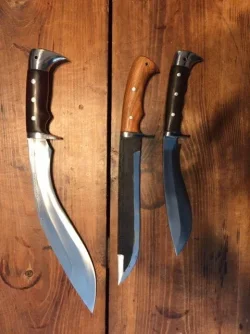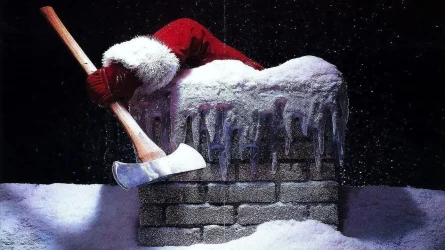It certainly is, in Nepal they are the everyday tool
It is a myth, I use mine in the kitchen chopping onions etc, the use of it isn't genetic, it's taught like using any other tool.
I would have a hard time using the big kukhri in the kitchen. That 13 inch blade is just massive. I could see using a smaller one though, and they do come in many sizes. The maker from which I bought mine has them ranging from about 6 inch to over twenty. Some of the larger ones have an extra long grip and are meant to be used two-handed. others of that size are still one-handed, and I personally think I hit my limit at about the 13 inch mark, for one-handed. Its a size i'm comfortable with, it could be an effective yard or camp tool, and I can still be nimble enough with it to consider it a weapon.
I considered one of the two-handers, but i have swords so that category of weapon is already covered.
These items are not perfect, there are some design flaws that I will need to rectify. They all have grips that are a bit on the large side, too thick for my comfort. I'm not a big fellow, my hands are not oversized, but I feel like the grips are designed for a larger fellow. So I may decide to grind them down a bit and refinish the wood.
The middle sized piece has some blackening on the blade, meant to inhibit rust. I don't know what that blackening is made of, but it is causing the blade to stick in the sheath. The sheath is cotton wood wrapped in leather, and that blade just locks in there and is proving to be quite difficult to remove. When I wiped some light oil on the blade with a paper towel, it did not slide smoothly through the paper towel, so that was my first clue. It did not slide easily like the non-coated blades did. So I need to grind/sand that coating off and see how that affects it. If worse comes to worst, I have a good friend (one of my first martial arts teachers from the 1980s, actually) who does leather work and I can commission him to make new sheaths for any of these. I've had him do a number of such things in the past.
The other two have that pommel that comes to a point. Well, that point is actually rather large and somewhat sharp. I don't like it, as it turns out. I want to grind it back a bit, but it is clear that the pommel is a hollow-form. I might have chosen a different model if I had realized that. So if I grind the point back, I will likely open up the hollow form. I don't see any way around it, so I'll probably cram the form full of some kind of epoxy or something and smooth it over. It'll last and be fully functional, though will definitely have the look of a repair.
What I really like about them is that they all have the finger guard, and they all have the full tang, visible all the way around the grip. Many kukhri do not. I have two others that I bought years ago, and they do not. One of them has a fully visible tang, the other has a disappearing tang into the grip, so I don't know how robust it is, although in full fairness this is a common manufacturing design for these knives, so it is likely just fine.
But the lack of a finger guard always bothered me. I could see poking and hitting something hard, and my hand sliding right up over the blade.
All in all, design issues aside, I feel these were a good purchase. The price was more than fair, and they are what they are: big, robust, simple, durable, not expensive, something utterly useable.


